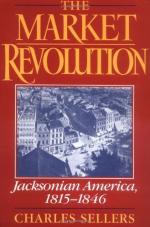|
This section contains 414 words (approx. 2 pages at 400 words per page) |

|
Chapter 13, The Great Contradiction Summary and Analysis
The ideal of liberal capitalism, in Sellers's eyes, is the ideal of equality before the law, property rights, self-made men, and a meritocratic and free society. However, these ideals cannot be reconciled in slavery in principle and as time progresses it cannot be reconciled with slavery in practice. The entire principle of liberal capitalism suggests an equality of human beings that cannot, without contradiction, be denied to blacks. Southern rationales for slavery are preposterous and the number of abolitionists is growing in the North, led by radicals like William Lloyd Garrison and supported by northern blacks and many women who want to extend the ideal of equality to female equality as well.
The pressures in favor of slavery expand with the cotton industry but the cotton industry also makes slave labor very valuable and bids...
(read more from the Chapter 13, The Great Contradiction Summary)
|
This section contains 414 words (approx. 2 pages at 400 words per page) |

|




